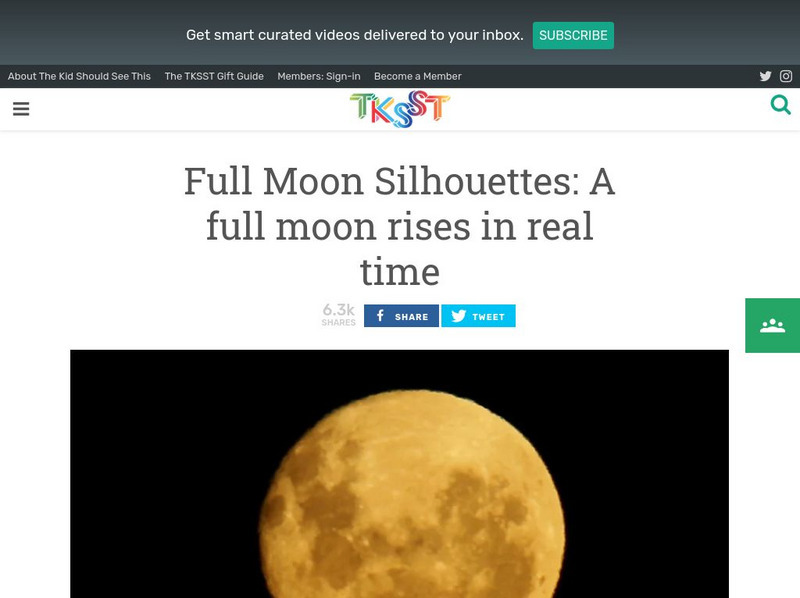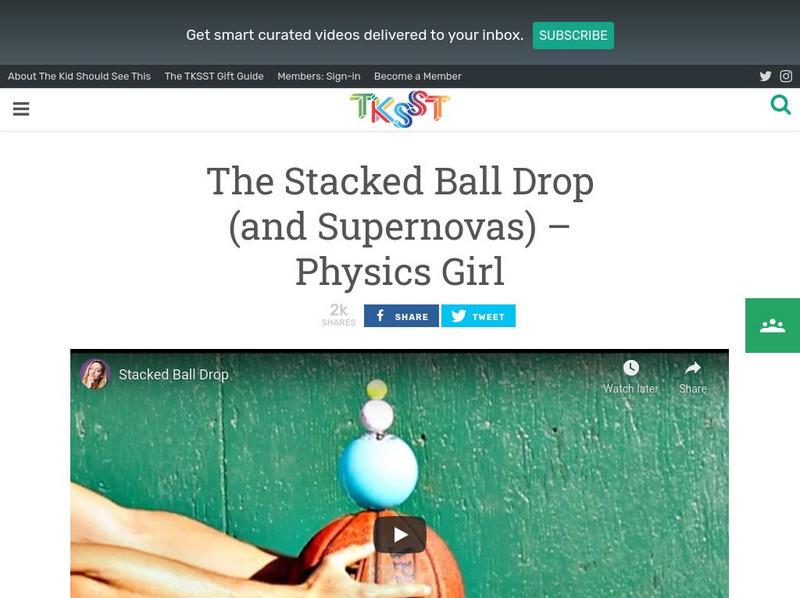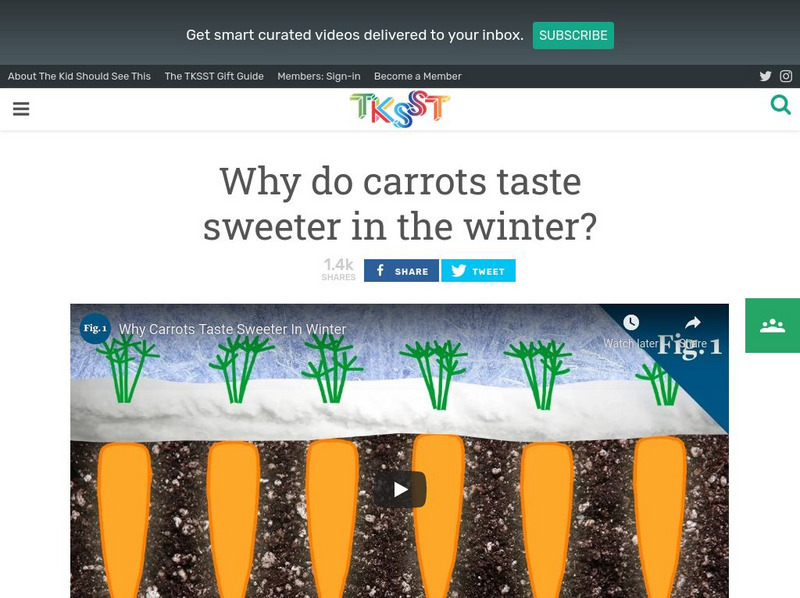The Kid Should See This
Tksst: Fly Agaric (Amanita Muscaria): A Time Lapse of Growth
See this incredible time lapse footage of fly agaric mushrooms grow and die over the span of 2 minutes. [1:43]
The Kid Should See This
Tksst: Volcanic Eruptions 101: How It Happens
Discover the anatomy of a volcano, and how the unseen underground variables can make it difficult to know how a volcano might behave. [1:54]
The Kid Should See This
Tksst: Minute Physics: How an Airplane Is Made
Take this behind-the-scenes tour of the Airbus factories, research, and design facilities, and see how an A350 is built. [5:14]
The Kid Should See This
Tksst: Phases of the Moon, Animated With Virtual Moon Atlas
A stunning time-lapse video animation of the phases of the moon, created using Virtual Moon Atlas. [3:53]
The Kid Should See This
Tksst: The Hammer Feather Drop in the World's Biggest Vacuum Chamber
Brian Cox visits NASA's Space Power Facility to demonstrate what happens when a bowling ball and a feather are dropped together under the conditions of space. [4:41]
The Kid Should See This
Tksst: Full Moon Silhouettes: A Full Moon Rises in Real Time
Watch real-time footage of the full moon rise over Wellington, New Zealand in celebration of the 2014 supermoon. [3:45]
The Kid Should See This
Tksst: Deep Look: The Hidden Perils of Permafrost
By examining a permafrost core in a CT scanner, travel back in time to help answer important questions about the frozen soil and its ability to support life. [3:12]
The Kid Should See This
Tksst: Pygmy Seahorses: Masters of Vibrantly Colored Coral Camouflage
See tiny and delicate, pygmy seahorses survive by attaching to vibrant corals where they become nearly invisible to both predators and researchers. [2:27]
The Kid Should See This
Tksst: Physics Girl: The Stacked Ball Drop (And Supernovas)
What happens when you drop a stack of bouncy balls together? Watch this classic momentum transfer demonstration, and discover how it relates to a supernova. [3:33]
The Kid Should See This
Tksst: Why Do Carrots Taste Sweeter in the Winter?
Listen as Molecular Biologist Liz Roth-Johnson explains why cold weather makes carrots taste sweeter. [1:02]
The Kid Should See This
Tksst: From Seed to Sapling: Time Lapse of an Oak Tree
See a sprouting acorn grow over the course of eight months, and eventually plant as an oak tree sapling in a garden. [3:02]
The Kid Should See This
Tksst: The Phases of the Moon Visualized From the Other Side
See the phases of the moon from the perspective of the other side. How does it look different? [1:53]
The Kid Should See This
Tksst: Incredible Slow Motion Lightning Strike
See this incredible slow motion lightning strike which is actually only one second of lightning slowed down to three minutes. [3:14]
The Kid Should See This
Tksst: Watch Snowflakes Form in Time Lapse Through a Microscope
See these snowflakes form in incredible time-lapse footage over the span of two minutes. [2:00]
The Kid Should See This
Tksst: Power of Optics: A Light Powered Rube Goldberg Machine
See a type of Rube Goldberg machine that is powered by a beam of light that bounces off mirrors, magnifying glasses, and other reflective surfaces to burn through strings, melt ice, and pop balloons along the way. [2:01]
The Kid Should See This
Tksst: The Story of Jane Goodall and Her Chimps (2010)
Follow Jane Goodall and the 60 Minutes cameras back to the forests of Tanzania, where she began her study of chimpanzees over 50 years ago, and be reminded that chimps are still endangered. [13:08]
The Kid Should See This
Tksst: What Makes That Fresh Rain Smell? Mit Films Rain Drops to Find Out
Using high speed cameras, MIT researchers filmed what happens when a raindrop hits a surface and traps tiny air bubbles, and then bursts from the drop in a fizz of aerosols. [1:29]
The Kid Should See This
Tksst: The Ring of Truth: Two Hydrogen Atoms & One Oxygen Atom
Watch as two units of hydrogen are combined with two units of oxygen over and over again. [2:53]
The Kid Should See This
Tksst: Deep Look: What Gives the Morpho Butterfly Its Magnificent Blue?
Take a look into structural coloration, the physics of light, and how it is possible that the Morpho butterfly's wings appear to be blue, despite their containing no blue pigment at all. [3:03]
The Kid Should See This
Tksst: Minute Earth: Why Do Rivers Curve?
Watch as water pushes against soft soil, shifting rivers into the meandering water flows that we can observe on maps from high above around the Earth. [2:56]
The Kid Should See This
Tksst: Cymatics: Science and Music Equals Audio Frequency Visualizations
New Zealand musician Nigel Stanford showcases audio frequency visualizations in this music video. [5:52]
The Kid Should See This
Tksst: Science Take: A Surprising Appetite for Dead Jellyfish
Based on recent marine studies, learn how scientists have been rethinking of the jellyfish's position in the food web. [1:34]
The Kid Should See This
Tksst: The Sun, Our Closest Star, in a Stunning 4 K Time Lapse Animation
Using time=lapse photography, watch 16 of our Eartrh days rotate by in almost eight minutes, or 52.5 minutes per second. [7:56]
The Kid Should See This
Tksst: Science Take: Tagging Tiny Turtle Hatchlings
Scientists have found a way to track turtle hatchlings, and they hope to eventually uncover the mystery of their movements during their first journey out to sea. [1:54]























